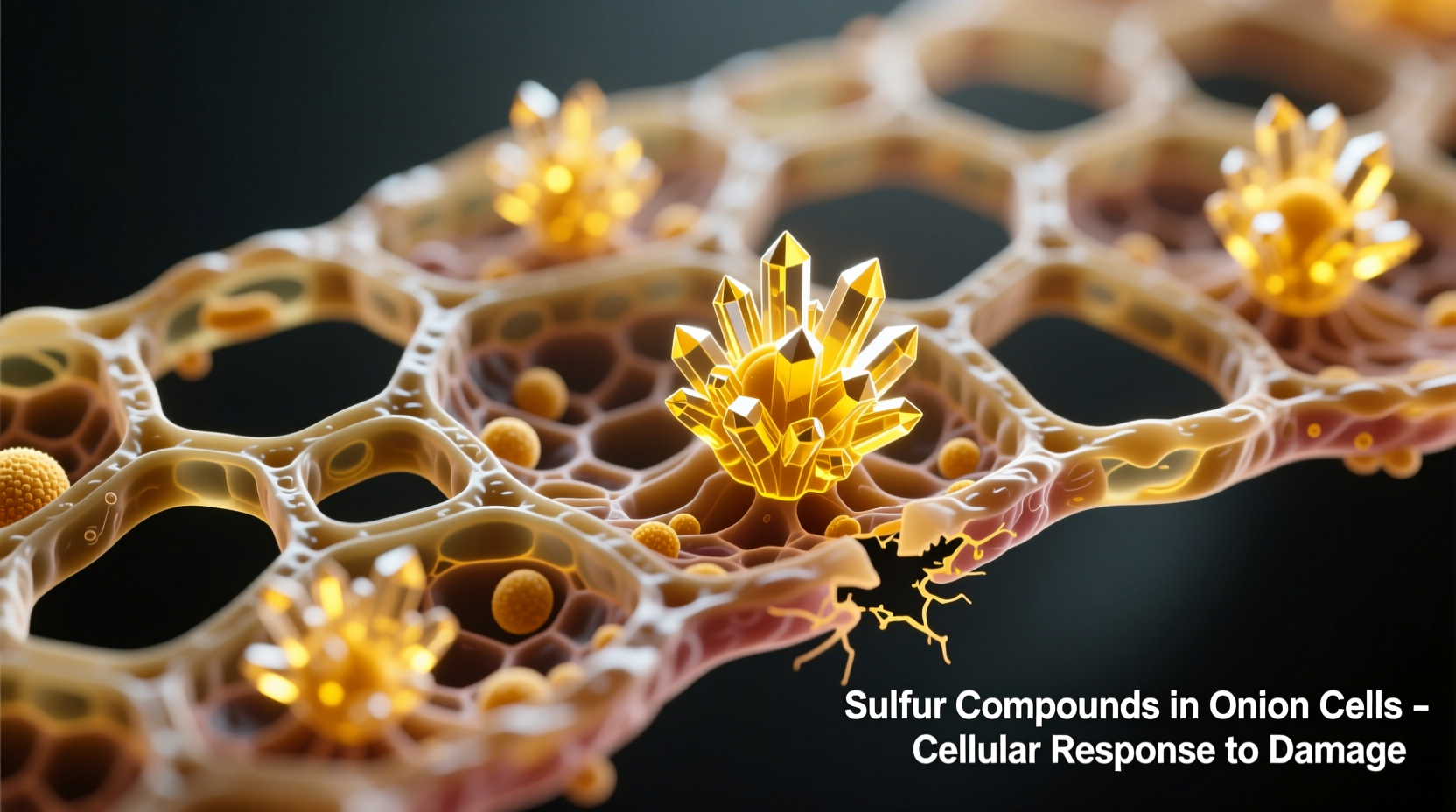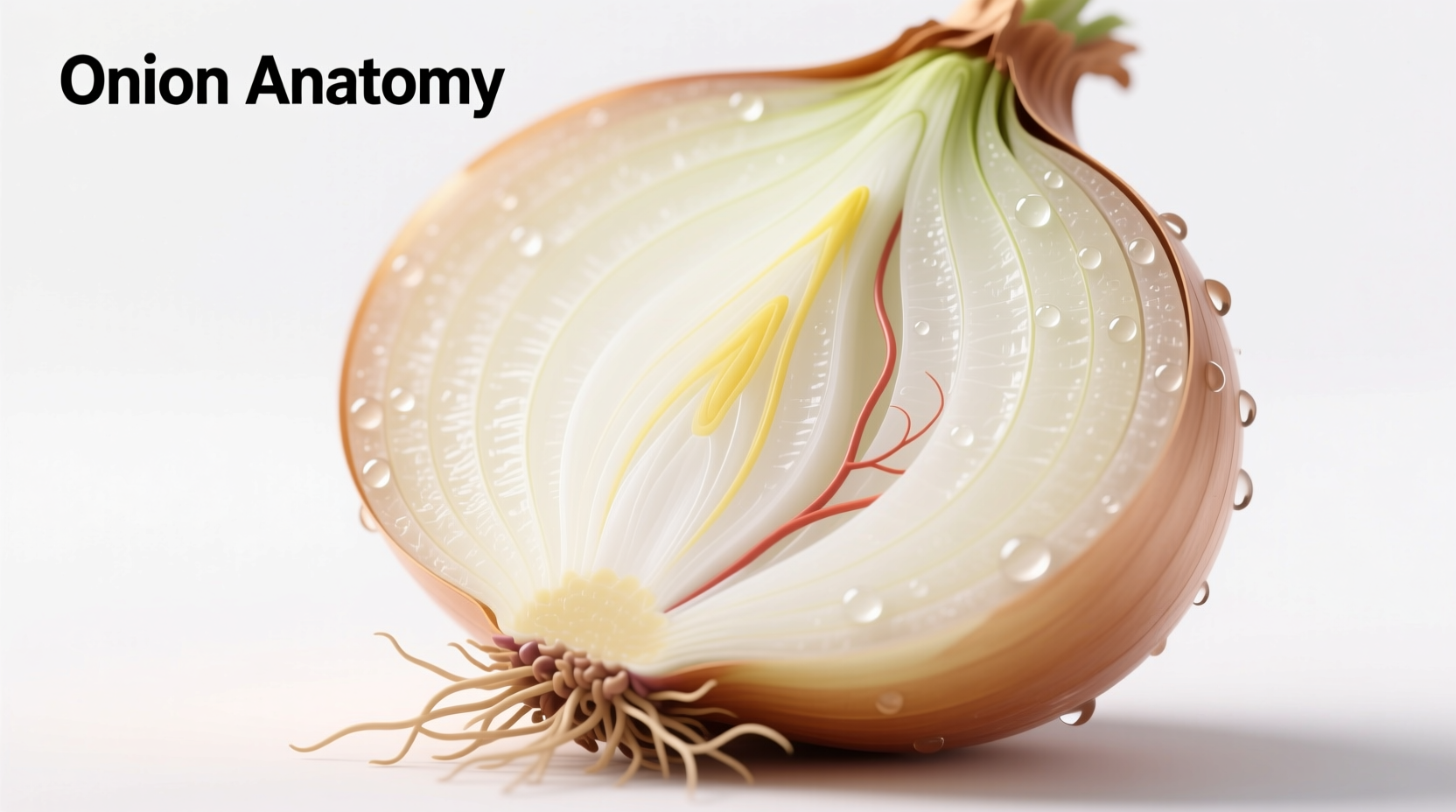Ever wondered what gives onions their distinctive bite and health-boosting properties? Understanding onion composition reveals why this humble kitchen staple has been valued for thousands of years across global cuisines and traditional medicine systems. This comprehensive guide breaks down exactly what's inside onions, how these components affect flavor and health, and practical ways to maximize their benefits in your cooking.
The Core Nutritional Profile of Onions
Onions might seem simple, but their nutritional makeup creates complex culinary and health effects. According to USDA FoodData Central, a 100g serving of raw yellow onion contains:
| Nutrient | Amount per 100g | % Daily Value |
|---|---|---|
| Water | 89.11 g | - |
| Carbohydrates | 9.34 g | 3% |
| Dietary Fiber | 1.7 g | 6% |
| Sugars | 4.24 g | - |
| Protein | 1.1 g | 2% |
| Vitamin C | 7.4 mg | 8% |
| Folate (B9) | 19 μg | 5% |
| Potassium | 146 mg | 3% |
While these numbers seem modest, onions deliver concentrated benefits through their unique phytochemical composition. The real magic happens when you cut or crush onions, triggering chemical reactions that create their characteristic flavors and health-promoting compounds.
Why Onions Make You Cry: The Science Behind the Sting
When you slice an onion, you rupture its cells, releasing enzymes that convert sulfoxides into sulfenic acids. These quickly rearrange into syn-propanethial-S-oxide—a volatile gas that reacts with moisture in your eyes to form sulfuric acid, causing that familiar burning sensation. This natural defense mechanism evolved to deter pests, but understanding it helps you minimize tears:
- Chill onions before cutting to slow enzyme activity
- Use a sharp knife to cause less cell damage
- Cut near running water or under a vent to disperse the gas

Key Bioactive Compounds in Onions
Beyond basic nutrition, onions contain specialized compounds that deliver significant health benefits:
Organosulfur Compounds
Responsible for onions' pungent smell and many health benefits, these compounds include:
- Allicin - Forms when cutting, has antimicrobial properties
- Diallyl disulfide - May help reduce inflammation
- S-allyl cysteine - Shows potential cardiovascular benefits
Flavonoids and Antioxidants
Onions rank among the highest vegetable sources of flavonoids, particularly:
- Quercetin - Especially concentrated in red onions (up to 1,135 mg/kg), this powerful antioxidant may help reduce blood pressure and inflammation
- Anthocyanins - Give red onions their color and additional antioxidant capacity
Research from the National Institutes of Health shows that quercetin absorption increases when onions are cooked, making both raw and cooked onions valuable dietary components.
How Onion Varieties Differ in Composition
Not all onions are created equal. Different varieties contain varying concentrations of beneficial compounds:
| Onion Type | Quercetin Content | Sweetness Level | Best Uses |
|---|---|---|---|
| Red Onions | High (up to 1,135 mg/kg) | Moderate | Raw applications, salads |
| Yellow Onions | Moderate | Medium-high when cooked | Caramelizing, cooking |
| White Onions | Low | High | Mexican cuisine, salsas |
| Shallots | Very high | High | Vinaigrettes, sauces |
Agricultural Research Service studies show that growing conditions significantly impact phytochemical content. Onions grown in sulfur-rich soils develop higher concentrations of beneficial organosulfur compounds, while those in cooler climates often develop sweeter profiles as they convert more sugars to compensate for temperature stress.
Practical Applications: Using Onion Science in Your Kitchen
Understanding onion composition helps you maximize flavor and nutrition:
Cooking Methods That Preserve Benefits
- Raw applications: Best for preserving vitamin C and certain enzymes, ideal for salads and salsas
- Light sautéing: Preserves more quercetin than boiling (which can leach compounds into water)
- Caramelizing: Creates new flavor compounds through the Maillard reaction while concentrating natural sugars
Pairing Onions with Other Foods
Onion compounds interact with other ingredients:
- Combine with healthy fats (olive oil) to increase absorption of fat-soluble compounds
- Pair with iron-rich foods—onion's vitamin C enhances iron absorption
- Add to bean dishes to reduce gas-producing compounds
Health Benefits Supported by Research
Multiple studies confirm the health-promoting properties of onions' unique composition:
A 2022 review in Nutrients journal analyzed 27 studies on onion consumption and found consistent evidence that regular onion intake correlates with:
- Reduced risk of cardiovascular disease through improved cholesterol profiles
- Lower blood pressure levels, particularly with red onion varieties
- Anti-inflammatory effects that may help manage chronic conditions
- Potential cancer-protective properties, especially for digestive tract cancers
The American Heart Association recognizes onions as part of heart-healthy dietary patterns, noting their potassium content helps balance sodium effects and their flavonoids support vascular health.
Storage Tips to Maintain Onion Quality
Proper storage preserves onion composition and extends shelf life:
- Store whole onions in a cool, dark, well-ventilated space (not the refrigerator)
- Keep cut onions in airtight containers in the refrigerator for up to 7 days
- Freeze chopped onions for longer storage (though texture changes)
- Never store onions near potatoes—they emit gases that accelerate each other's spoilage
Research from the University of California Cooperative Extension shows that proper storage maintains quercetin levels for up to 3 months, while improper conditions can reduce beneficial compounds by up to 30% in just 2 weeks.











 浙公网安备
33010002000092号
浙公网安备
33010002000092号 浙B2-20120091-4
浙B2-20120091-4